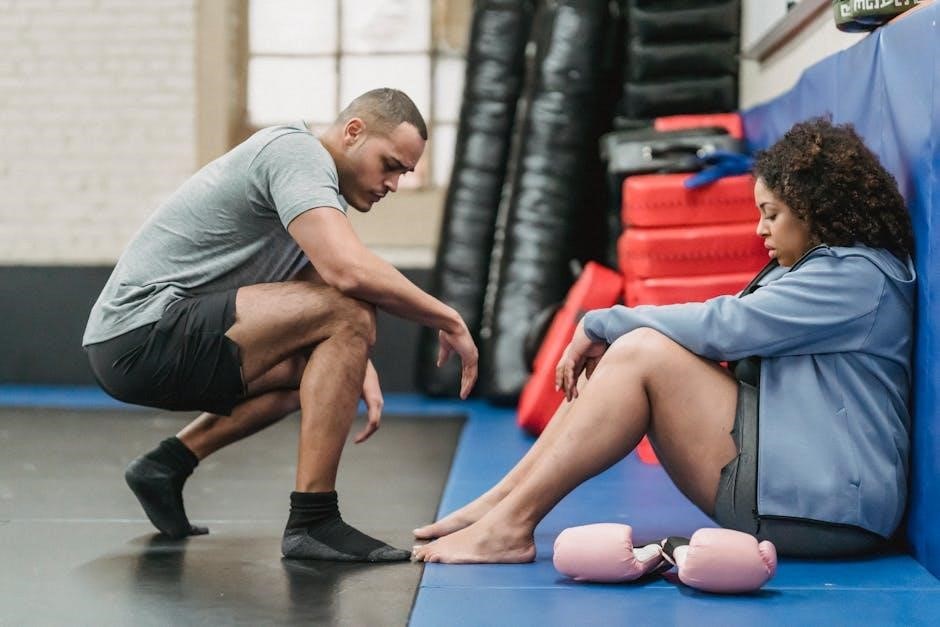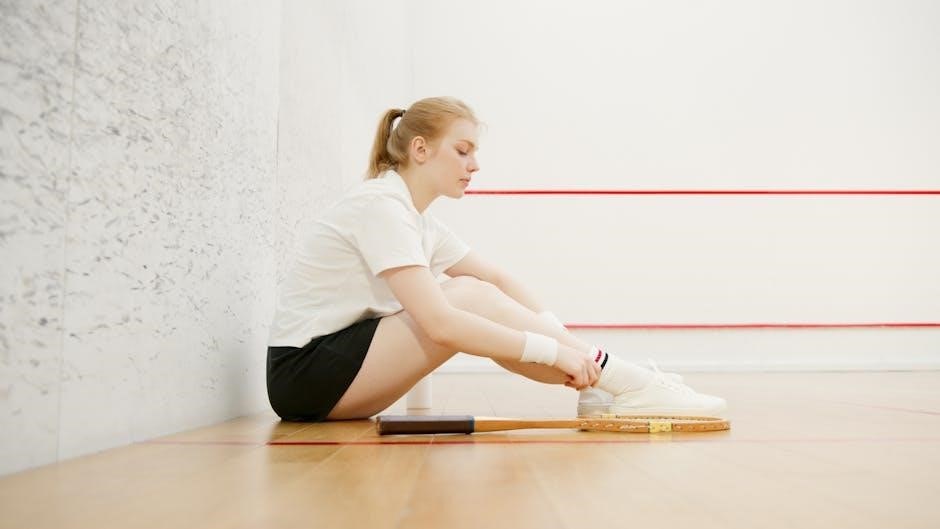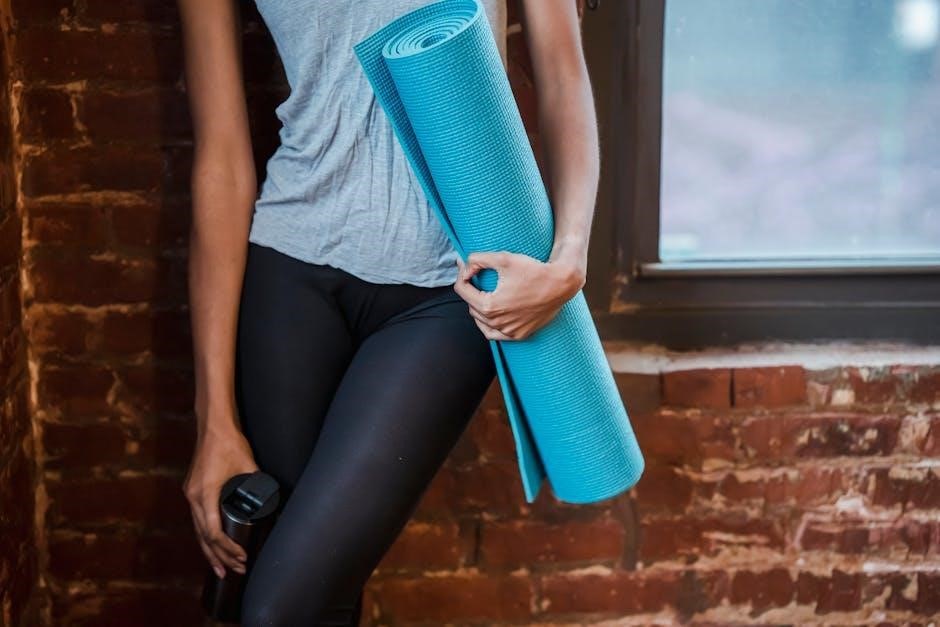Understanding Pant Breaks: A Comprehensive Fit Guide
Pant break defines how trousers interact with shoes‚ creating folds or creases. This fit guide explores various break types‚ aiding in selecting the optimal style for diverse body types and occasions.
Understanding pant breaks is crucial for a polished appearance‚ influencing overall silhouette and proportion. A well-chosen break elevates your style effortlessly.
What is Pant Break?
Pant break‚ in menswear‚ refers to the crease or fold that appears at the bottom hem of your trousers where the fabric rests upon your shoes. It’s essentially the point where the pant’s silhouette “breaks” against the footwear. This isn’t a flaw‚ but a deliberate style element impacting overall fit and aesthetic.
The amount of break varies‚ ranging from a subtle crease to a more pronounced fold. Understanding pant break is vital for achieving a balanced and refined look. It’s determined by the length of the trousers relative to the shoe height and the wearer’s stance. A proper break enhances proportions and demonstrates attention to detail.
Different break styles – full‚ half‚ quarter‚ or no break – convey different levels of formality and fashion-forwardness. Choosing the right break depends on shoe style‚ body type‚ and the occasion.
Why Pant Break Matters for Style

Pant break significantly impacts your overall silhouette and perceived style. A well-chosen break creates visual harmony‚ balancing proportions and elevating your appearance. It demonstrates attention to detail‚ signaling a refined sense of style. Conversely‚ an incorrect break can appear sloppy or disproportionate‚ detracting from an otherwise polished outfit.
The break influences the perceived formality of your look; Fuller breaks often lean towards a more traditional aesthetic‚ while no break styles project a modern‚ minimalist vibe. It also affects how shoes are showcased; a subtle break allows the footwear to be more prominent.
Ultimately‚ mastering pant break is about achieving a balanced and intentional look that complements your body type and personal style.

Types of Pant Breaks
Pant breaks range from full to none‚ each offering a distinct aesthetic. Understanding these variations – full‚ half‚ quarter‚ and no break – is key to achieving a perfect fit.
Full Break
Full breaks showcase a noticeable fold or crease where the trouser fabric distinctly rests upon the shoe. This classic style features a generous amount of fabric bunching at the front‚ creating a traditional and somewhat formal appearance.
Historically favored‚ full breaks work best with wider-legged trousers and more substantial footwear like classic dress shoes or loafers. They visually balance broader builds and offer a comfortable‚ relaxed feel. However‚ they can sometimes appear dated or overwhelming with slimmer silhouettes.
Consider full breaks for a conservative‚ established look‚ particularly in professional settings. They project an air of authority and timeless elegance‚ though modern preferences often lean towards less pronounced breaks.
Characteristics of a Full Break
A full break is easily identified by a deep‚ defined crease at the front of the trouser‚ where the fabric noticeably folds over the shoe. This creates a substantial stack of material‚ typically around 1.5 to 2.5 inches or more‚ depending on shoe height and trouser width.
The fabric’s drape is significant‚ resulting in multiple creases and a more relaxed silhouette. It’s a more traditional aesthetic‚ often seen on classic suit trousers. The break isn’t subtle; it’s a deliberate design element.
This style inherently adds visual weight to the lower body‚ making it suitable for certain body types and shoe styles. It’s a clear indication of a longer trouser length‚ intentionally allowing for the fabric to gather.
Suitable Shoe Styles for a Full Break
A full break pairs exceptionally well with more substantial footwear‚ balancing the volume of fabric. Classic leather dress shoes‚ such as Oxfords or Derbies with thicker soles‚ complement this style beautifully. Loafers‚ particularly those with a slightly heavier construction‚ also work effectively.
Boots‚ especially chukka boots or Chelsea boots with a moderate heel‚ can also accommodate a full break. Avoid sleek‚ minimalist sneakers or shoes with very thin soles‚ as they can appear disproportionate. The goal is to create a harmonious visual balance between the trouser and the shoe.
Generally‚ shoes with a more traditional aesthetic align best with the classic feel of a full break.
Body Types Best Suited for a Full Break
A full break generally suits taller individuals‚ as it doesn’t visually shorten the legs. It’s particularly flattering for those with broader shoulders or a more substantial build‚ balancing proportions. Men with athletic builds can also benefit‚ as the break adds visual weight.
Those of average height can wear a full break‚ but it’s crucial to ensure the trousers aren’t excessively long‚ potentially creating a sloppy appearance. Individuals with slimmer builds should exercise caution‚ as a full break might overwhelm their frame.
Ultimately‚ confidence is key‚ but a full break tends to look best on those who can carry its more traditional aesthetic.
Half Break
The half break strikes a balance between classic and contemporary style. It features a noticeable‚ yet moderate‚ crease where the trouser hem gently rests on the shoe. This creates a sophisticated look without appearing overly formal or dated. It’s a versatile option suitable for various occasions.
Defining the half break aesthetic involves a slight stacking of fabric‚ showcasing a deliberate fold. It’s less dramatic than a full break‚ offering a cleaner silhouette. This break type is considered a safe and stylish choice for many wardrobes‚ bridging traditional and modern sensibilities.
It’s a universally flattering option‚ adaptable to different personal styles.
Defining the Half Break Aesthetic
The half break aesthetic is characterized by a visible‚ yet restrained‚ crease in the trousers above the shoe. Unlike a full break‚ it doesn’t create a significant stack of fabric. Instead‚ it presents a gentle fold‚ suggesting a deliberate and refined style. This break type offers a balance between formality and casualness.
It’s about showcasing a subtle interaction between the hem and the shoe‚ creating a polished appearance without being overly fussy. The half break is often described as a modern classic‚ appealing to those who appreciate timeless style with a contemporary edge. It’s a versatile choice for various settings.
It’s a sophisticated and approachable look.
Shoes That Complement a Half Break
A half break pairs exceptionally well with a diverse range of footwear‚ enhancing its versatile appeal. Loafers‚ both penny and tassel‚ are a classic match‚ emphasizing a relaxed yet refined aesthetic. Similarly‚ bluchers and brogues‚ particularly those with a moderate welt‚ complement the subtle crease beautifully.
For a more contemporary look‚ clean leather sneakers can be paired with a half break‚ creating a stylishly casual ensemble. Monk straps also work well‚ adding a touch of sophistication. Avoid overly bulky or aggressively styled shoes‚ as they can overwhelm the balanced proportion created by the half break.
The key is to maintain harmony between the shoe and the trouser silhouette.
Ideal Body Types for a Half Break
The half break is remarkably adaptable‚ suiting a broad spectrum of body types. It’s particularly flattering for individuals of average height and build‚ creating a balanced and proportional silhouette. Those with slightly shorter legs can benefit from the illusion of length offered by the subtle crease.
Men with athletic builds often find the half break complements their physique without appearing overly formal or restrictive. It provides a modern‚ streamlined look. Individuals who are taller may also wear a half break‚ but should ensure the overall proportion remains harmonious.
Ultimately‚ confidence and personal style are paramount‚ but the half break is a universally flattering choice.
Quarter Break
The quarter break represents a refined and contemporary aesthetic‚ characterized by a minimal crease where the trouser hem gently rests on the shoe. It’s a subtle touch‚ offering a cleaner line than a full or half break‚ and projects an air of understated elegance. This break is favored by those seeking a modern‚ sophisticated appearance.
Achieving the quarter break requires precise tailoring‚ ensuring the trousers skim the shoe without bunching or excessive folding. It’s a testament to attention to detail and a discerning eye for style. The result is a polished and elongated silhouette‚ ideal for both casual and more formal settings.
It’s a versatile choice for the modern gentleman.
The Subtle Elegance of a Quarter Break
The quarter break embodies a quiet sophistication‚ a departure from bolder statements. It’s a nuanced detail that speaks volumes about a man’s understanding of fit and proportion. This minimal crease offers a refined aesthetic‚ suggesting a confident and understated style. It’s not about drawing attention‚ but rather about presenting a polished and harmonious look.
This break type excels in its versatility‚ seamlessly transitioning from business casual to smart casual environments. It’s a testament to the power of subtlety‚ proving that less can indeed be more. The quarter break elevates an outfit without overwhelming it‚ creating a balanced and elegant silhouette.
It’s a timeless choice for the discerning dresser.
Shoe Pairings for a Quarter Break
A quarter break pairs exceptionally well with a variety of footwear‚ enhancing its sophisticated appeal. Loafers‚ both penny and tassel‚ are a natural complement‚ echoing the break’s refined aesthetic. Sleek chukka boots also harmonize beautifully‚ creating a balanced and proportionate silhouette. For a more contemporary look‚ consider pairing with minimalist sneakers – think clean lines and low profiles.
Avoid overly bulky or aggressively styled shoes‚ as they can disrupt the delicate balance of the quarter break. The goal is to maintain a sense of harmony and proportion. Monk straps and dress boots with a moderate heel height also work wonderfully‚ adding a touch of formality without overpowering the overall look.
Subtlety is key when choosing footwear.
Body Types That Shine with a Quarter Break
The quarter break is particularly flattering on individuals with proportional builds‚ creating a streamlined and balanced appearance. Those of average height benefit greatly‚ as the subtle break avoids shortening the legs. Men with slimmer builds will appreciate the added visual weight‚ creating a more substantial silhouette.
It also works well for those with slightly athletic builds‚ softening the lines and adding a touch of sophistication; Individuals who are taller can pull off a quarter break without appearing disproportionate. Avoid if you have very short legs‚ as it can visually truncate your height.
Ultimately‚ confidence is key‚ but this break generally suits a balanced physique.
No Break
The no break style represents a modern‚ minimalist aesthetic where trousers end precisely at the top of the shoe‚ exhibiting no folding or creasing. This look is favored for its clean lines and contemporary feel‚ projecting a confident and fashion-forward image. It’s a bolder choice‚ demanding precise tailoring for optimal effect.
This style isn’t universally flattering and requires careful consideration. It’s best suited for those who prioritize a streamlined silhouette and aren’t afraid to make a statement. The no break look is increasingly popular in modern menswear‚ offering a fresh alternative to traditional styles.
It’s a testament to evolving fashion sensibilities.
The Modern‚ Minimalist No Break Look
The no break aesthetic embodies modern minimalism‚ prioritizing clean lines and a streamlined silhouette. It’s a deliberate departure from traditional trouser breaks‚ showcasing confidence and a contemporary fashion sense. This style emphasizes the shoe‚ making it a focal point of the outfit. It’s a popular choice among those seeking a polished‚ yet understated appearance.
Achieving this look requires precise tailoring; the trousers must end exactly at the shoe’s top. A slight deviation can ruin the effect. This style often pairs well with slimmer-fitting trousers and is favored by individuals who appreciate a sophisticated‚ uncluttered wardrobe. It’s a bold statement in modern menswear.
Shoes to Wear with No Break Pants

No break pants demand footwear that complements their clean lines and modern aesthetic. Loafers‚ particularly penny loafers and tassel loafers‚ are excellent choices‚ enhancing the sophisticated vibe. Sleek sneakers‚ especially minimalist designs in leather or canvas‚ also work exceptionally well‚ creating a contemporary‚ casual look.
Chelsea boots and chukka boots are also fantastic pairings‚ offering a refined yet versatile option. Avoid bulky or overly ornate shoes‚ as they can disrupt the streamlined silhouette. The key is to maintain balance and proportion. Consider the overall outfit and choose shoes that elevate‚ not overwhelm‚ the no break style.
Body Types That Benefit from a No Break
No break pants are particularly flattering for leaner builds and those with proportional legs. They visually elongate the leg line‚ creating a taller‚ more streamlined appearance. Individuals of average height also benefit‚ as the clean silhouette avoids shortening the legs.

However‚ those with shorter legs should exercise caution‚ as no break styles can sometimes accentuate a lack of length. Taller individuals can confidently embrace this modern look‚ maximizing its elongating effect. It’s a great choice for those seeking a minimalist‚ contemporary style that highlights their physique without added bulk or visual interruption.

Measuring Pant Break
Accurate measurement is key to achieving the desired pant break. Utilizing simple tools and following a step-by-step guide ensures a perfect fit and tailored appearance.
Tools You’ll Need for Accurate Measurement
Achieving a precise pant break measurement requires minimal‚ readily available tools. First‚ a flexible measuring tape is essential for determining the distance from the bottom of the trouser hem to the shoe. A sturdy pair of shoes‚ specifically those you intend to wear with the pants‚ are crucial for an accurate assessment of the break.
Additionally‚ a flat‚ hard surface – like a wooden or tile floor – provides a stable base for the measurement process. A mirror is highly recommended‚ allowing you to visually inspect the break while wearing the pants and shoes. Finally‚ a pen or marker can be useful for lightly marking the desired break point on the trousers before hemming‚ ensuring consistency and precision.
Step-by-Step Guide to Measuring Break
Begin by putting on the shoes you plan to wear with the trousers. Next‚ stand naturally with your weight evenly distributed. Have someone measure from the bottom of the trouser hem to the top of your shoe‚ at the front of your ankle. This measurement determines the initial break.
Observe the crease or fold formed where the pants meet the shoe. A slight bend indicates a minimal break‚ while a more pronounced fold suggests a fuller break. Repeat the measurement on both legs to ensure consistency. Note the measurement in inches or centimeters for reference when communicating with a tailor.
Understanding Break Measurements (Inches/Centimeters)
A no break typically shows 0 inches (0 cm) of break – pants skim the shoe without any folding. A quarter break measures around 1-2 inches (2.5-5 cm)‚ creating a subtle crease. A half break falls between 2-3 inches (5-7.5 cm)‚ offering a moderate fold.
A full break registers 3+ inches (7.5+ cm)‚ displaying a noticeable crease. These measurements are guidelines; personal preference and style influence the ideal break. Remember‚ a larger number signifies a more pronounced break. Consider your body type and shoe style when interpreting these measurements for a harmonious fit.

Factors Influencing Pant Break Choice
Pant break selection hinges on shoe style‚ body proportions‚ and occasion formality. These elements work together to create a balanced and aesthetically pleasing silhouette.
Shoe Style and Pant Break Correlation
Shoe style significantly impacts the ideal pant break. For instance‚ chunkier footwear‚ like boots‚ often pairs well with a fuller break‚ providing a balanced visual weight. Conversely‚ sleeker shoes‚ such as loafers or dress shoes‚ complement a more minimal break – a half‚ quarter‚ or even no break.
The goal is to avoid an unbalanced look. A substantial break with delicate shoes can appear overwhelming‚ while a no-break pant with bulky boots might seem disproportionate. Consider the shoe’s profile and volume when determining the appropriate amount of break. Classic dress shoes generally benefit from a slight to moderate break‚ enhancing the overall sophistication.
Sneakers often look best with a no or quarter break‚ creating a modern‚ streamlined aesthetic. Ultimately‚ the correlation between shoe style and pant break is about achieving visual harmony.
Body Proportions and Break Selection
Body proportions play a vital role in selecting the most flattering pant break. Taller individuals can often pull off a no-break or minimal break without appearing disproportionate‚ creating a long‚ lean silhouette. Shorter individuals might benefit from a fuller break‚ which can visually elongate the legs.
Those with longer legs can experiment with various break styles‚ while individuals with shorter legs should avoid excessive fabric bunching. Consider your overall height and leg length when choosing a break. A well-chosen break can balance your proportions and enhance your physique.
Furthermore‚ broader builds may benefit from a moderate break to add visual balance‚ while slimmer builds can often handle a more minimal aesthetic.
Formality of the Occasion & Break Type
The formality of the occasion significantly influences the appropriate pant break. More formal settings‚ such as business meetings or weddings‚ generally call for a fuller or half break‚ conveying a classic and refined aesthetic. These breaks project a sense of tradition and sophistication;

Conversely‚ casual environments allow for greater flexibility. A quarter break or no break is perfectly acceptable for everyday wear‚ offering a modern and minimalist look. These styles are ideal for relaxed settings and contemporary outfits.
Consider the overall dress code and the impression you wish to create when selecting your break. A conservative break demonstrates respect for tradition‚ while a minimal break showcases a modern sensibility.
Pant Break Chart: A Quick Reference

Pant break charts simplify selecting the ideal break based on shoe style and body type‚ ensuring a harmonious and proportional silhouette for any outfit.
Break Type vs. Shoe Style Chart
Here’s a guide correlating pant break types with appropriate shoe styles for a balanced look:
- Full Break: Best paired with classic dress shoes like Oxfords or Brogues‚ offering a traditional and formal aesthetic.
- Half Break: Versatile‚ complementing loafers‚ monk straps‚ or bluchers‚ creating a smart-casual vibe.
- Quarter Break: Ideal with sleek sneakers‚ chukka boots‚ or minimalist dress shoes‚ projecting a modern and refined style.
- No Break: Suited for fashionable sneakers‚ Chelsea boots‚ or contemporary dress shoes‚ achieving a streamlined and trendy appearance.
Consider shoe formality; a full break with sneakers appears unbalanced. Matching break to shoe style enhances overall outfit cohesion and demonstrates attention to detail.
Break Type vs. Body Type Chart
Selecting the right pant break considers body proportions for a flattering fit:
- Tall & Slim: A quarter or no break maintains a modern silhouette‚ avoiding excess fabric.
- Average Build: Half break offers versatility‚ suiting most shoe styles and body types.
- Shorter Stature: A full break can create the illusion of longer legs‚ but avoid excessive fabric.
- Athletic Build: Quarter or half break balances muscular legs‚ preventing a constricted look.
Individuals with larger builds may benefit from a half or full break‚ providing a more balanced proportion. Experimentation is key; consider personal preference and overall style goals.

Getting Your Pants Hemmed for the Perfect Break
Professional tailoring is essential for achieving the desired pant break. A skilled tailor ensures precise adjustments‚ enhancing both fit and overall aesthetic appeal.
Finding a Skilled Tailor
Locating a reputable tailor is paramount for achieving the perfect pant break. Seek recommendations from friends‚ family‚ or online reviews. Look for tailors specializing in menswear and possessing extensive experience with various fabrics and fits.
Observe the tailor’s workspace; a clean and organized environment often indicates attention to detail. Don’t hesitate to ask about their experience with pant hemming and break adjustments specifically. A skilled tailor should confidently discuss different break styles and offer informed advice.
Consider a trial alteration – a simple hem on an older pair of pants – to assess their workmanship before entrusting them with valuable garments. Communication is key; clearly articulate your desired break and be open to their professional suggestions.
Communicating Your Desired Break to the Tailor
Clearly articulate your preferred break – full‚ half‚ quarter‚ or no break – to the tailor. Visual aids are incredibly helpful; bring photos illustrating the desired look. Be specific about the amount of break you envision‚ referencing measurements if possible (e.g.‚ “a quarter break‚ approximately one inch”).
Explain your shoe style‚ as the break should complement your footwear. Mention whether you typically wear dress shoes‚ sneakers‚ or boots. Discuss the occasion for which the pants are intended; a more formal event may necessitate a different break than casual wear.
Be prepared to try on the pants with your shoes during the fitting. The tailor will assess the break and make adjustments accordingly. Don’t hesitate to voice any concerns or request further refinement until you’re completely satisfied.
Cost of Hemming for Pant Break Adjustment
Hemming costs vary significantly based on location‚ tailor expertise‚ and complexity of the adjustment. A basic pant hem‚ without significant break alteration‚ typically ranges from $20 to $40. Adjusting for a specific break – full‚ half‚ or quarter – can increase the price to $30-$60.
More intricate alterations‚ such as preserving original buttonholes or working with delicate fabrics‚ will incur higher charges‚ potentially reaching $75 or more. Designer pants or those requiring extensive work may also command premium pricing.
Always request a quote before authorizing any work. Inquire about potential additional fees for rush services or complex adjustments. Consider the value of a perfect fit when evaluating the cost.
